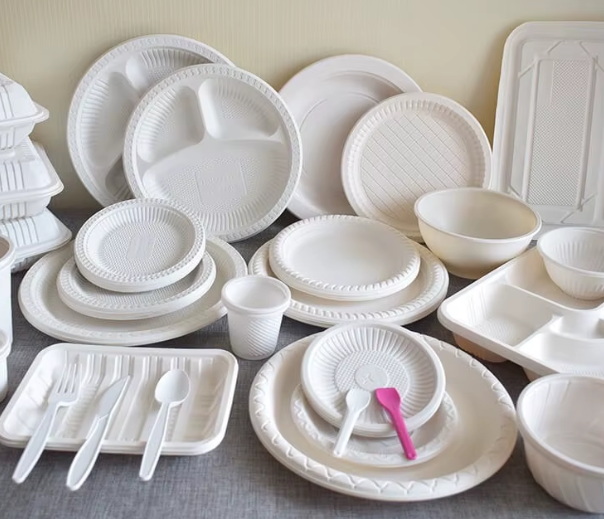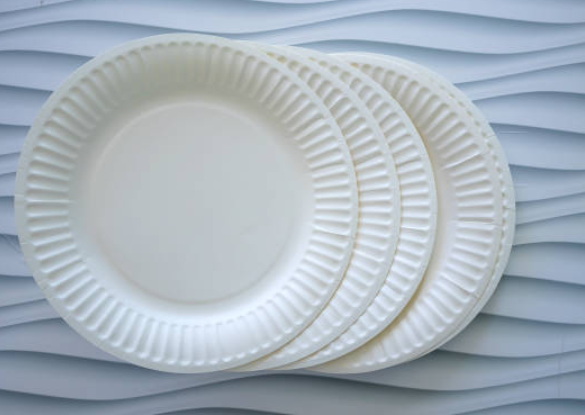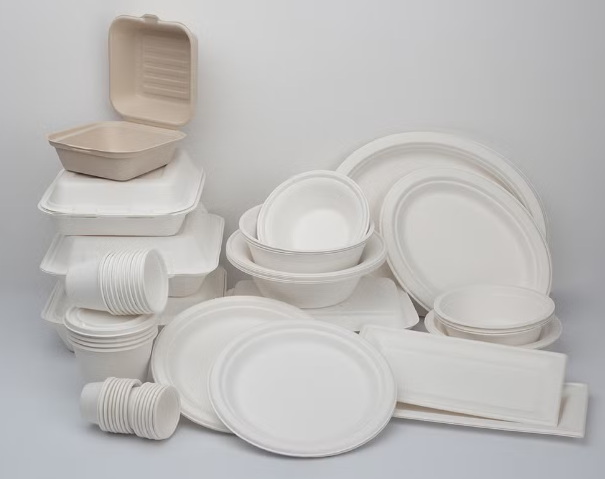
Content Menu
● Introduction to Disposable Plates
>> Plastic Disposable Plates
>> Paper Disposable Plates
● Recyclability of White Disposable Plate Sets
>> Plastic White Disposable Plate Sets
>> Paper White Disposable Plate Sets
● Eco-Friendly Alternatives
● The Impact of Disposable Tableware
● Future of Recycling
● Role of Consumers
● Conclusion
● Frequently Asked Questions
>> 1. Are All White Disposable Plate Sets Recyclable?
>> 2. What Are the Most Eco-Friendly Alternatives to White Disposable Plate Sets?
>> 3. How Do I Properly Dispose of White Disposable Plate Sets?
>> 4. Can White Disposable Plate Sets Be Composted?
>> 5. What Role Do Consumers Play in Promoting the Recycling of White Disposable Plate Sets?
● Citations:
In recent years, the issue of plastic waste has become a significant concern globally. As we strive towards a more sustainable future, understanding the recyclability of common disposable items like white disposable plate sets is crucial. This article will delve into the world of disposable plates, focusing on their recyclability, types, and eco-friendly alternatives.

Introduction to Disposable Plates
Disposable plates are widely used in parties, events, and daily life due to their convenience and ease of cleanup. They come in various materials, including plastic, paper, and bioplastics. The most common types are plastic disposable plates and paper disposable plates.
Plastic Disposable Plates
Plastic disposable plates are made from different types of plastics, such as polypropylene (PP) and polystyrene (PS). These materials are recyclable, but the process requires proper sorting and cleaning to ensure they can be reprocessed effectively. For instance, PP and PS plates can be recycled if they are marked with the appropriate recycling symbols and codes, which help identify the type of plastic and determine if it can be recycled[1].
Paper Disposable Plates
Paper disposable plates, on the other hand, are often made from natural fibers and are both recyclable and compostable. However, their recyclability is limited due to contamination from food residue and coatings like wax or plastic, which complicate the recycling process[3][4]. The production of paper plates also contributes to deforestation and requires significant energy consumption[3].
Recyclability of White Disposable Plate Sets
Plastic White Disposable Plate Sets
If white disposable plate sets are made from recyclable plastics like PP or PS, they can be recycled. However, not all plastic plates are recyclable, and their recyclability depends on the type of plastic used and local recycling facilities. The recycling process involves sorting, cleaning, and reprocessing the plastic to ensure it can be given a second life[1].
Paper White Disposable Plate Sets
Paper white disposable plate sets are generally recyclable and compostable, but their recyclability is often hindered by food contamination and coatings. They are made from natural materials and can be easily integrated into composting programs or recycled paper streams if properly cleaned and sorted[4].

Eco-Friendly Alternatives
For those looking to reduce their environmental footprint, there are several eco-friendly alternatives to traditional white disposable plate sets:
1. Compostable Plates: Made from materials like sugarcane bagasse or cornstarch, these plates are biodegradable and compostable. Sugarcane bagasse plates, for example, decompose quickly and can be composted in garden bins, reducing waste in landfills[2][8].
2. Reusable Plates: Although not disposable, reusable plates made from glass, ceramic, or stainless steel offer a sustainable option for frequent users. They have a lower environmental impact compared to disposable plates, especially when considering the long-term effects of production and disposal[6].
3. Bamboo Plates: Bamboo is a highly renewable resource, making bamboo plates a sustainable choice. They are durable, resistant to pests, and can be grown without pesticides, reducing environmental impact[2].
4. Palm Leaf Plates: These plates are 100% natural, biodegradable, and lack artificial binders or chemicals. They are strong, leak-proof, and can be composted after use, minimizing environmental impact[5][8].
The Impact of Disposable Tableware
Disposable tableware, including white disposable plate sets, contributes significantly to environmental issues. Plastic plates take centuries to degrade and can leach toxic chemicals into the environment, while paper plates contribute to deforestation and energy consumption[6][3]. Switching to reusable or eco-friendly disposable options can help mitigate these impacts.
Future of Recycling
As technology advances, recycling processes are becoming more efficient and cost-effective. Chemical recycling, for instance, can break down plastics into their basic components, allowing for the creation of new products. This innovation could significantly improve the recyclability of plastic plates and reduce waste.
Role of Consumers
Consumers play a crucial role in promoting sustainability by choosing recyclable or eco-friendly white disposable plate sets and supporting recycling programs. By advocating for better waste management practices and opting for sustainable alternatives, individuals can contribute to reducing environmental pollution.
Conclusion
In conclusion, white disposable plate sets can be recycled if they are made from recyclable materials. However, it's essential to choose eco-friendly options and support recycling programs to reduce waste and promote sustainability.

Frequently Asked Questions
1. Are All White Disposable Plate Sets Recyclable?
Not all white disposable plate sets are recyclable. Their recyclability depends on the material used, such as plastic or paper, and the specific recycling facilities available in your area.
2. What Are the Most Eco-Friendly Alternatives to White Disposable Plate Sets?
The most eco-friendly alternatives include compostable plates made from natural fibers like sugarcane bagasse or bamboo, and reusable plates made from materials like stainless steel or glass.
3. How Do I Properly Dispose of White Disposable Plate Sets?
To properly dispose of white disposable plate sets, check if they are recyclable or compostable. If recyclable, sort them accordingly and place them in your recycling bin. If compostable, they can be added to your compost pile.
4. Can White Disposable Plate Sets Be Composted?
If white disposable plate sets are made from compostable materials like sugarcane bagasse or palm leaves, they can be composted. However, not all disposable plates are compostable.
5. What Role Do Consumers Play in Promoting the Recycling of White Disposable Plate Sets?
Consumers play a crucial role by choosing recyclable or eco-friendly white disposable plate sets, supporting recycling programs, and advocating for better waste management practices in their communities.
Citations:
[1] https://smartyhadaparty.com/blogs/home/are-disposable-plastic-plates-really-recyclable
[2] https://www.bambuhome.com/blogs/bambuliving/compostable-vs-disposable-plates
[3] https://www.greenwashingindex.com/eco-friendly-or-silent-polluter/
[4] https://greencitizen.com/blog/are-paper-plates-recyclable/
[5] https://foogogreen.com/blog/ecofriendly-alternatives-for-paper-plates/
[6] https://anationofmoms.com/2023/11/disposable-tableware.html
[7] https://smartyhadaparty.com/blogs/home/recycling-disposable-dinnerware-guide
[8] https://diyecobox.com/10-eco-friendly-alternatives-to-paper-plates-for-sustainable-living/
[9] https://www.quitplastic.in/post/the-environmental-impact-of-traditional-disposable-tableware
[10] https://business.walmart.com/ip/600-Pack-White-Disposable-Paper-Plates-7-Inch-EcoQuality-Perfect-Parties-BBQ-Catering-Office-Event-s-Pizza-Restaurants-Recyclable-Compostable-Microwa/2531011762
[11] https://diyecobox.com/eco-friendly-alternatives-to-plastic-plates/
[12] https://www.thegoodboutique.com/inspiration/the-environmental-impact-of-disposable-tableware-and-sustainable-alternatives
[13] https://www.buzzcateringsupplies.com/paper-plate-178mm-7-inch-white-pack-of-100.html
[14] https://www.anchenggy.com/blog/best-disposable-plastic-cutlery-alternatives.html
[15] https://www.linkedin.com/pulse/environmental-impact-disposable-plastics-how-reduce-ecosoulhome-6lfdc
[16] https://www.alibaba.com/showroom/disposable-plates-for-wedding.html
[17] https://www.linkedin.com/advice/0/what-some-eco-friendly-alternatives-disposable-plates
[18] https://emeraldecovations.com/2024/08/understanding-the-environmental-impact-are-paper-plates-compostable/
[19] https://www.canadiantire.ca/en/cat/home/party-city/tableware/plates-DC0001309.html
[20] https://greenpaperproducts.com/collections/compostable-plates

















